Hot Forming - From Customer Request to Virtual Reality
Hot forming is growing rapidly and is a fascinating manufacturing technique, where the good formability of the warm blank is combined with exceptional strength of the end part due to the quenching in the tools. No traditional available material that is formable is even close to the strength of the hot formed steel. This makes it a natural choice for the crash relevant parts in the car. Today all major OEMs work with hot formed parts in the cars as crash re-enforcements. It allows building even small sized cars with an outstanding crash performance – enabling the traditionally weaker group A cars to get 5 stars in the EURO-NCAP crash tests (e.g. Fiat 500).

This means that looking only on the formability of the part during stamping does not really make sense. The whole chain has to be kept in mind from the early design stage on. To get the properties of the end part right is crucial to achieve the crash performance. This means that the crash engineers have to rely on the stamping department to manufacture the parts with the right properties.
Hot forming itself is a manufacturing technique where different fields will play together to make it work or not. The stamping department has to build knowledge now also in metallurgy, heat transfer, cooling and fluid dynamics – areas where normally several specialists are involved.
So to summarize, with this new process, the stamp engineer is suddenly confronted with several new areas where he has to have a high level of knowledge to get the process right.
Even for the most talented engineers, it will be asking too much to become an expert in all these fields. This is a typical area where the virtual manufacturing can play an important role in getting the new processes running. The part manufacturing with all its different aspects can be tested virtually before the expensive hot forming process is started. Also the part performance in the final crash can be tested virtually. This is, again, a step towards end to end virtual manufacturing – even if the challenge to simulate all the different aspects still remains.
The complete value chain is available today, allowing analysis of the complete press hardening process from initial part cost to distortion after quenching, cooling channel analysis and virtual reality check.
Material Cost Estimation

Topology Check, Clean Up And Repair
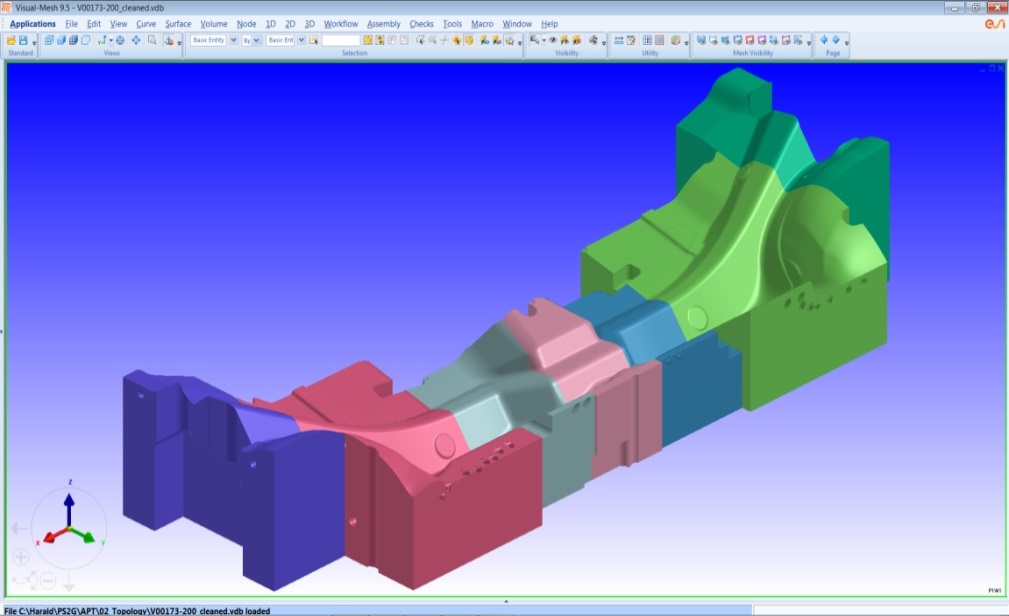
Feasibility Forming Simulation
- Transport – stamping
- Eliminate cracks and wrinkles
- Iterate with die face design until correct

Advanced Forming Simulation
- Transport – stamping - quenching
- Spotting the die face

Advanced Forming Simulation
- Transport – stamping – quenching – springback – cooling on air
- Spotted die face – realistic heat transfer to the die as in production
- Precise determination of the part temperature and phase proportions when it comes out of the die
- Part distortion – The deviation of the part from nominal shape depends strongly on the maximum temperature level after quenching
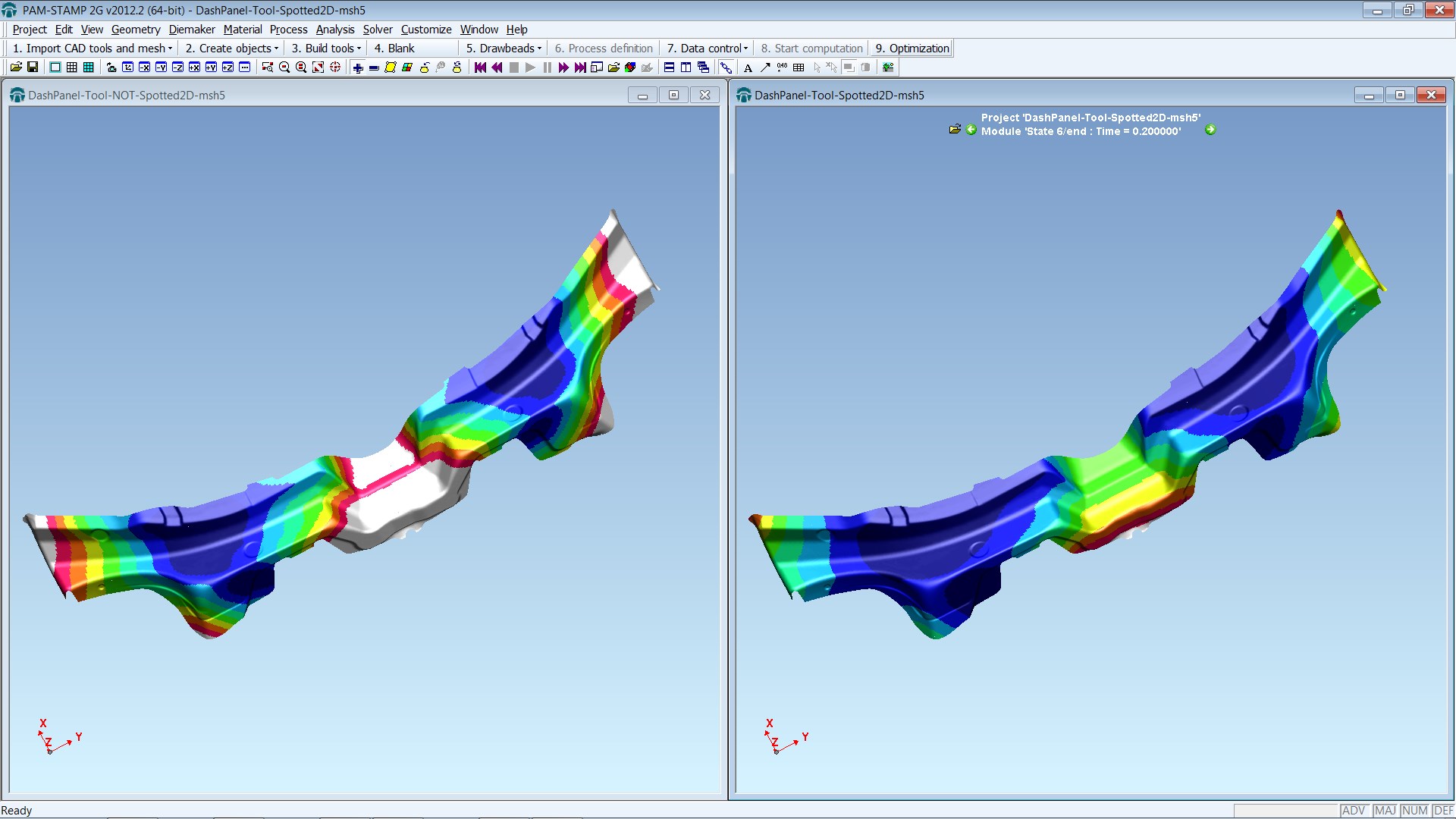
Partially Hardened And Patch Blank
It is also possible to engineer partially hardened and patch blanks. This is how typical cooling rates look like in a partially hardened part, displayed in a dilatometer test result. On the x-axis is the temperature, on the y-axis the actual volume relative to the starting point, as a function of temperature and phase transformations.

This is the resulting distortion due to air-cooling. It forms after the part is taken out of the die, due to an effect similar to a bi-metal.
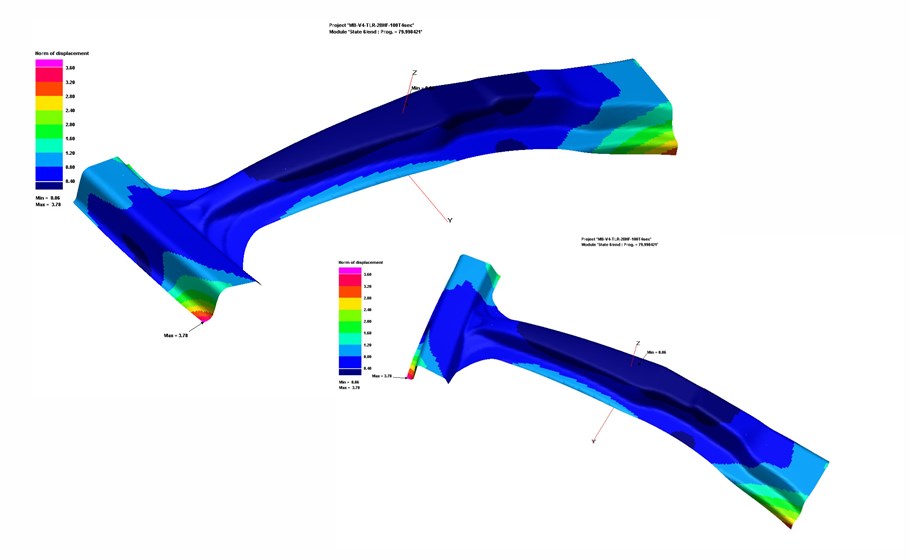
It is also possible to combine all these modeling techniques in a patch blank configuration.
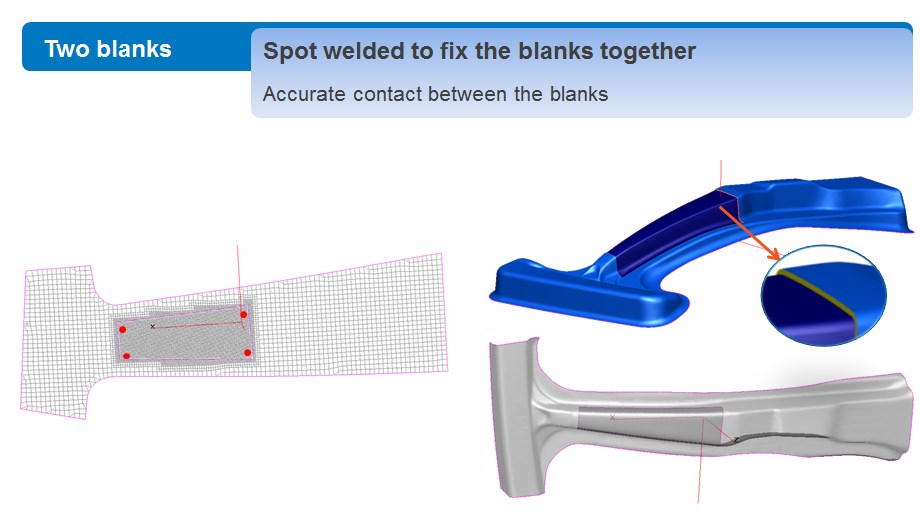
Hot Forming – Cooling Capability Of The Die
The cooling channel analysis is done with a heat transfer model – taking into account realistic blank temperatures from the forming simulation. Heat transfer maps are coming from the CFD analysis which can be see in next section. A dedicated tool is available to assemble the CAD and mesh the complex 3D die quickly.
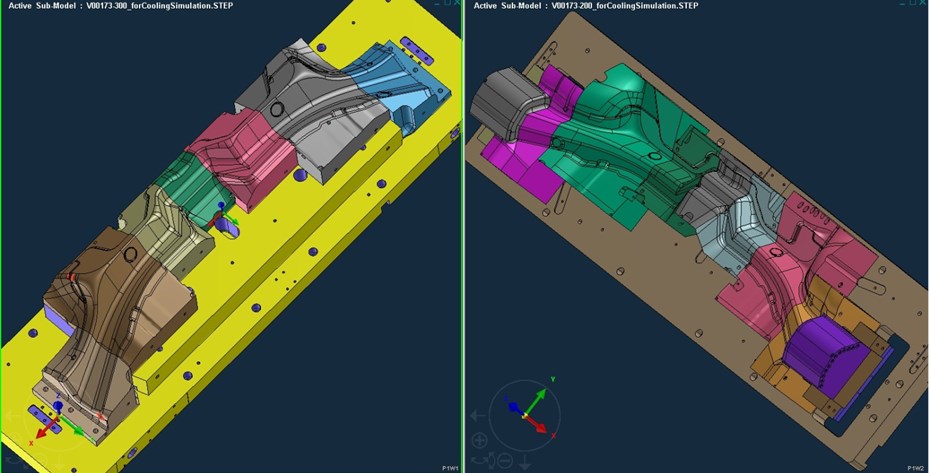

The heat transfer coefficient in the cooling channels is estimated at this stage to a constant value.

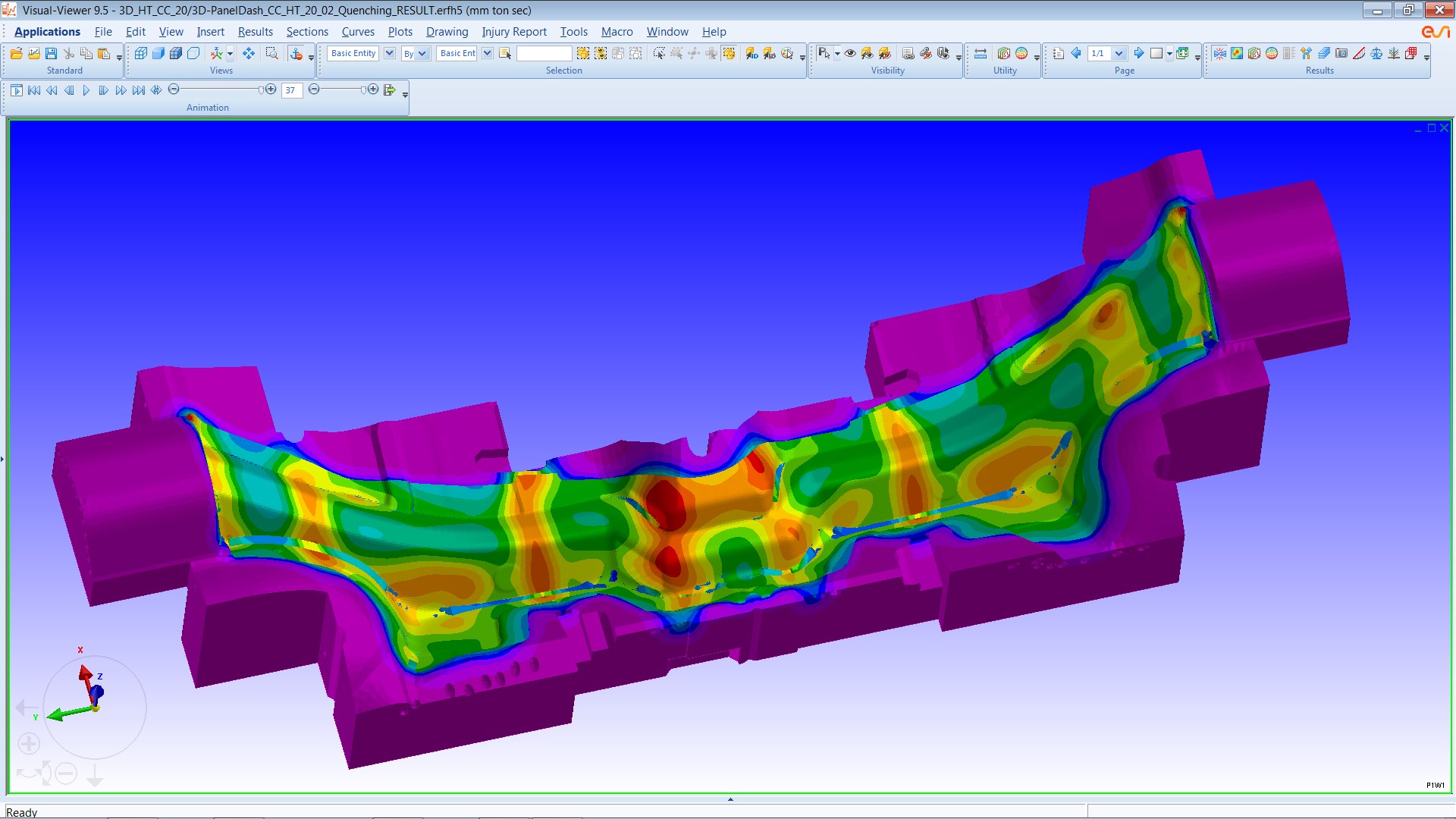
Cooling Channel Design - CFD
The heat analysis of alloy sheet hot stamping forming process and experiments indicate that the transition process from Austenite to Martensite by controlling the sheet heating and cooling temperature is the foundation of heat forming. Only when the cooling rate reaches or surpasses the critical cooling rate, Austenite can be transformed to Martensite directly. The critical cooling rate of sheet is related to such elements as critical water flow rate, die cooling system design, cooling medium and dented die medium. Under the condition that the elements such as die structure, cooling system and cooling medium are defined, critical cooling rate is a constant value. As a result, through controlling critical water flow rate, hot forming transition process and hot forming requirements can be guaranteed to overcome problems such as the excessive rebound, cracking, forming force increase and easy die wear in the hot forming process.
ACE+ CFD solver is used to compute the coolant flow rate through the upper and lower die cooling tubes. Fig. 21 shows the pressure distribution in the upper die cooling tube at 2, 5, and 8 bars. The CFD analysis also predicts the heat transfer coefficient in the cooling tubes. The heat transfer coefficients, which are computed by ACE+, are mapped to PAM-STAMP to compute the tool face temperature.
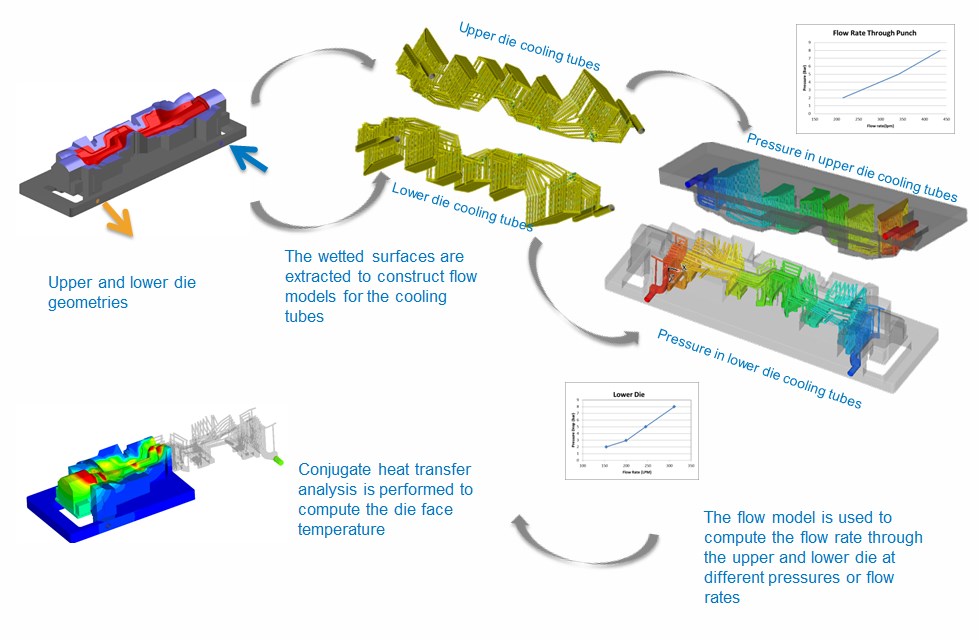
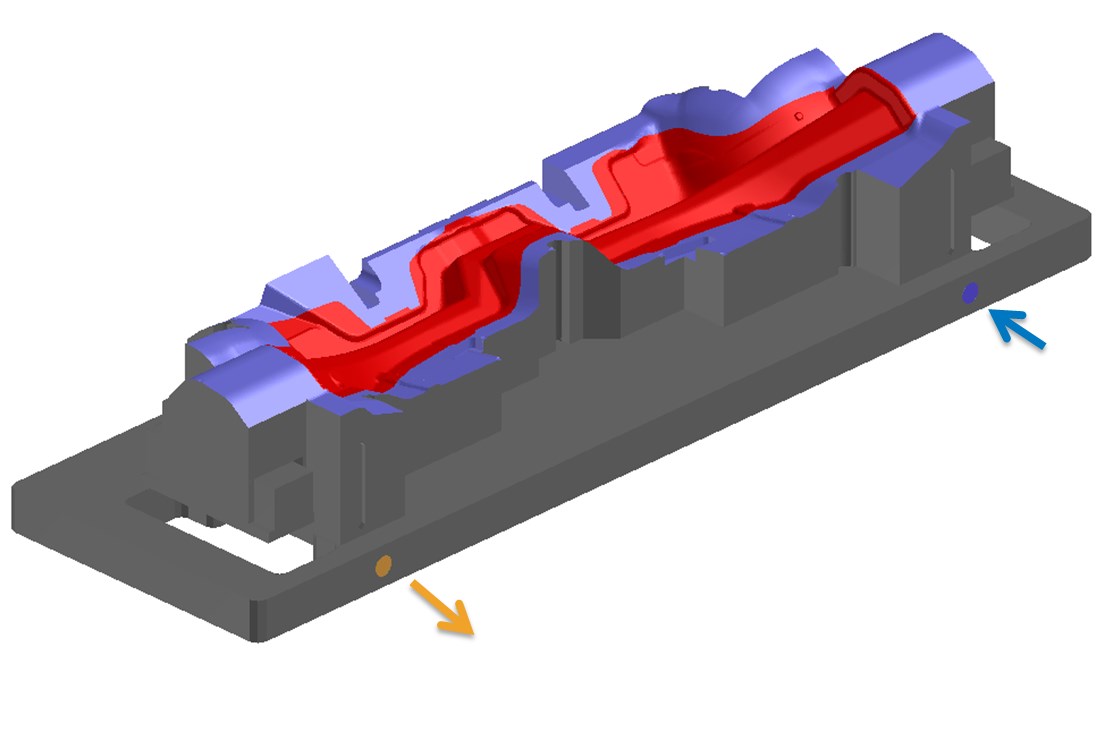
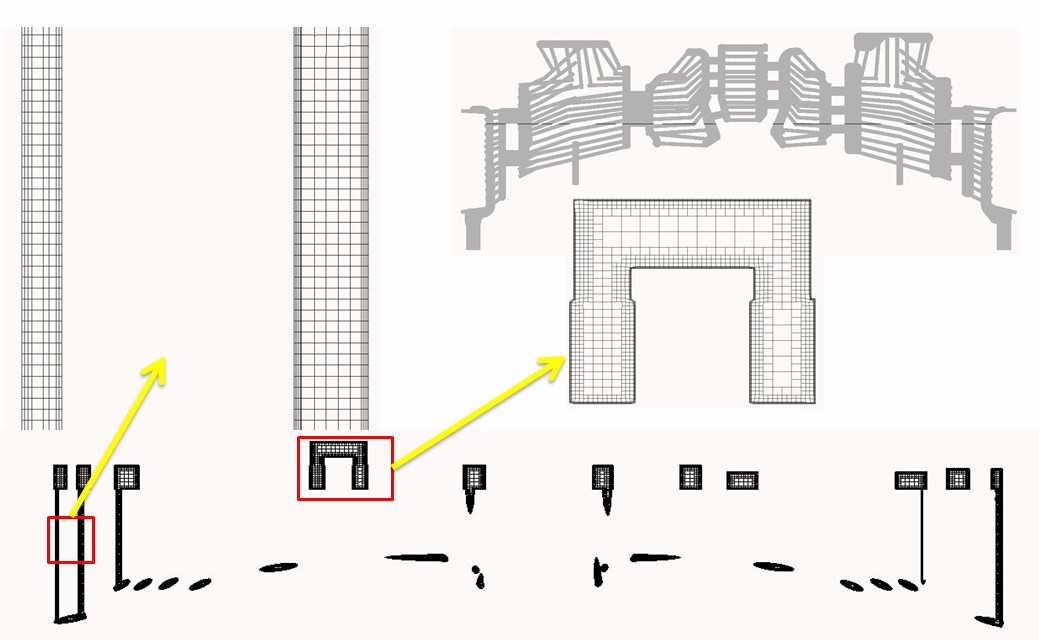
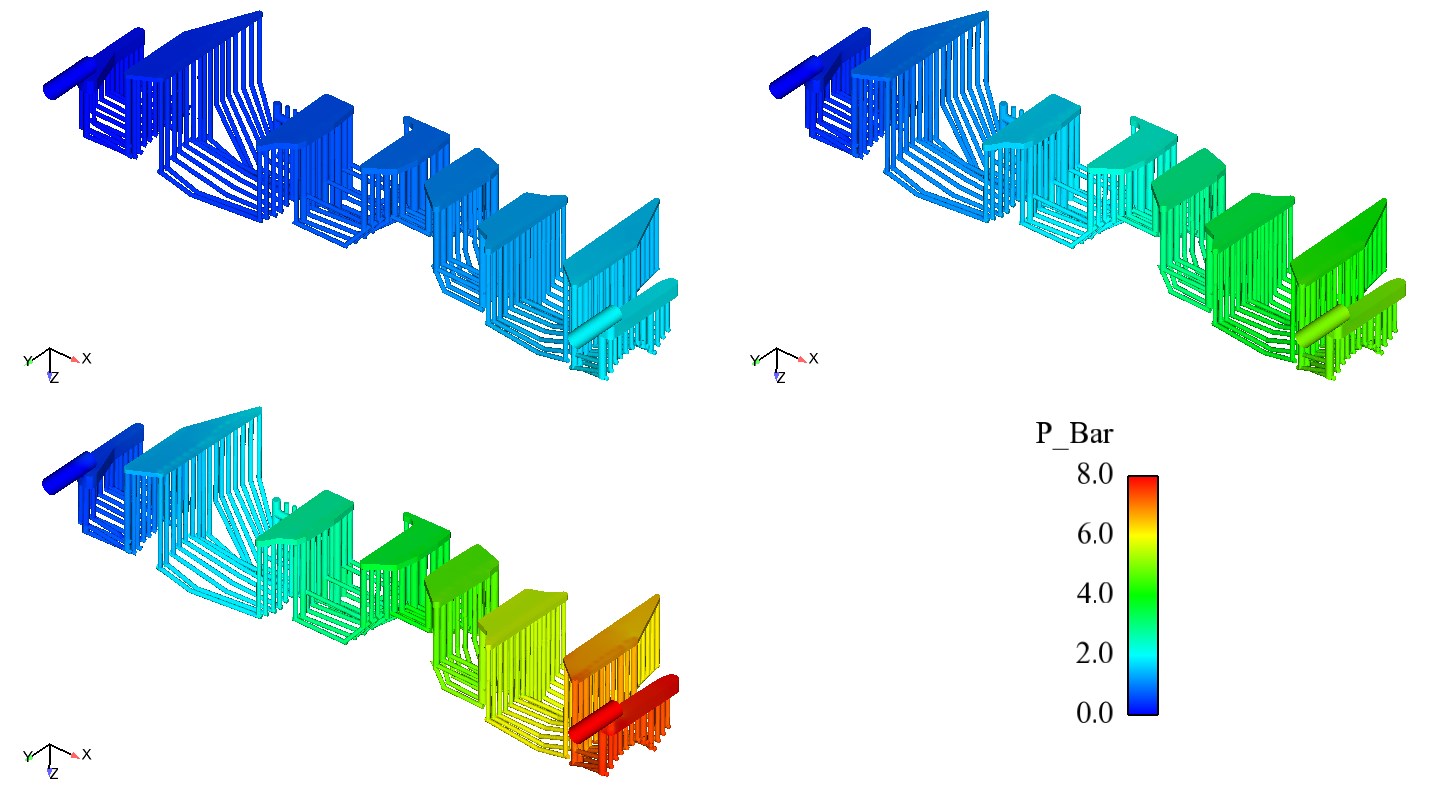
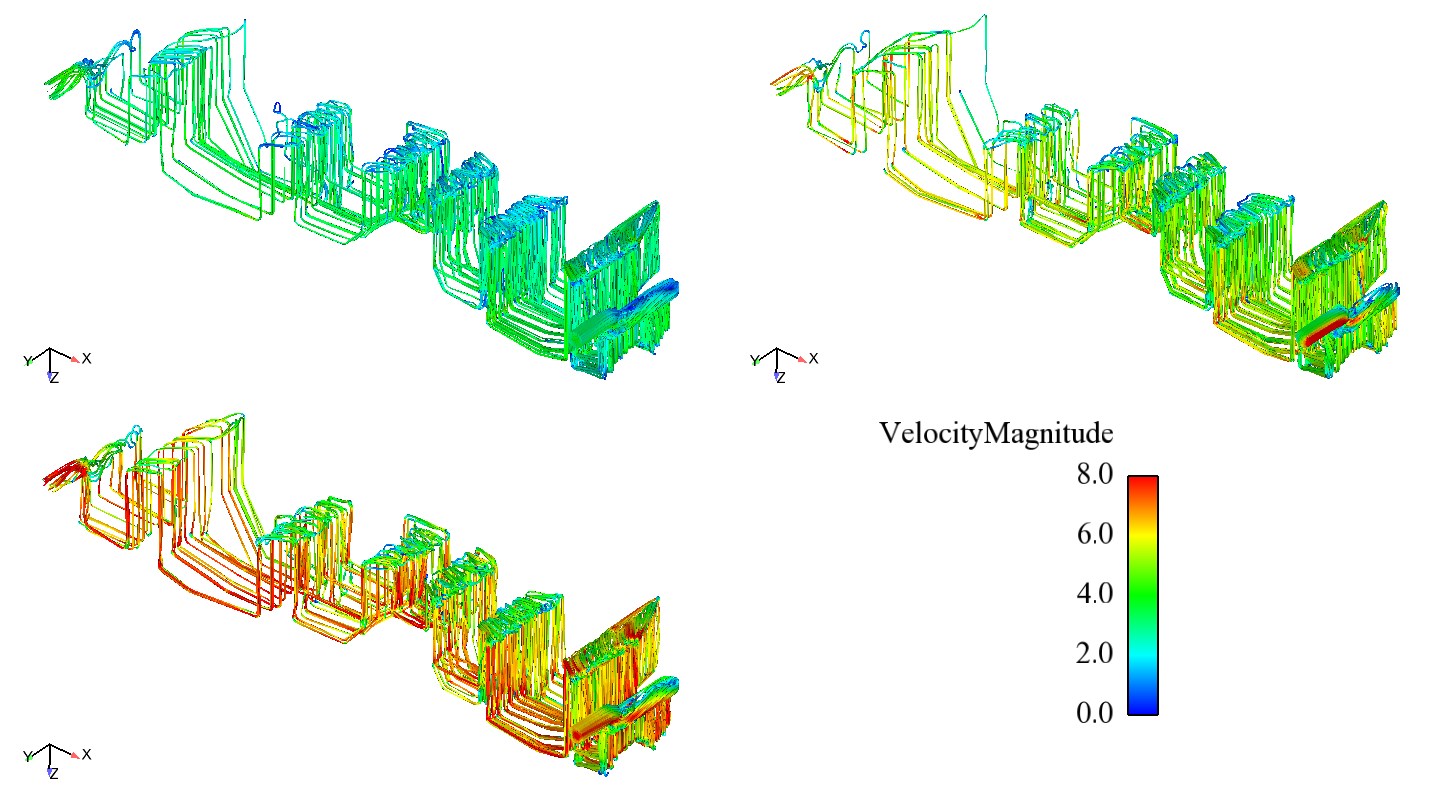
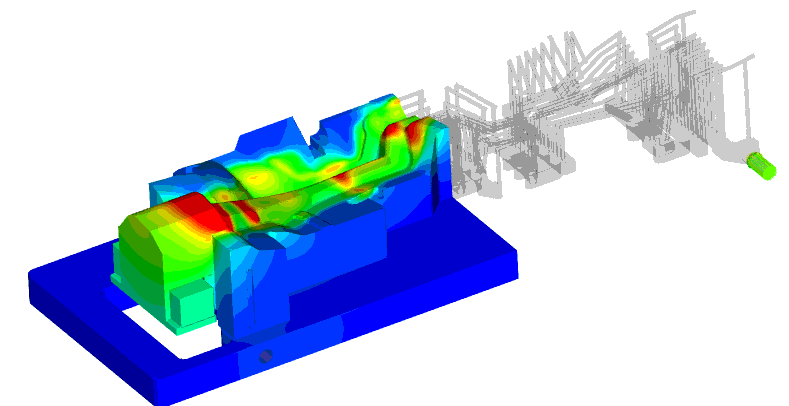
Virtual Reality
Virtual Reality is used to review the complete engineering of hot forming lines. It is even possible to integrate results computed with sheet metal forming simulation.
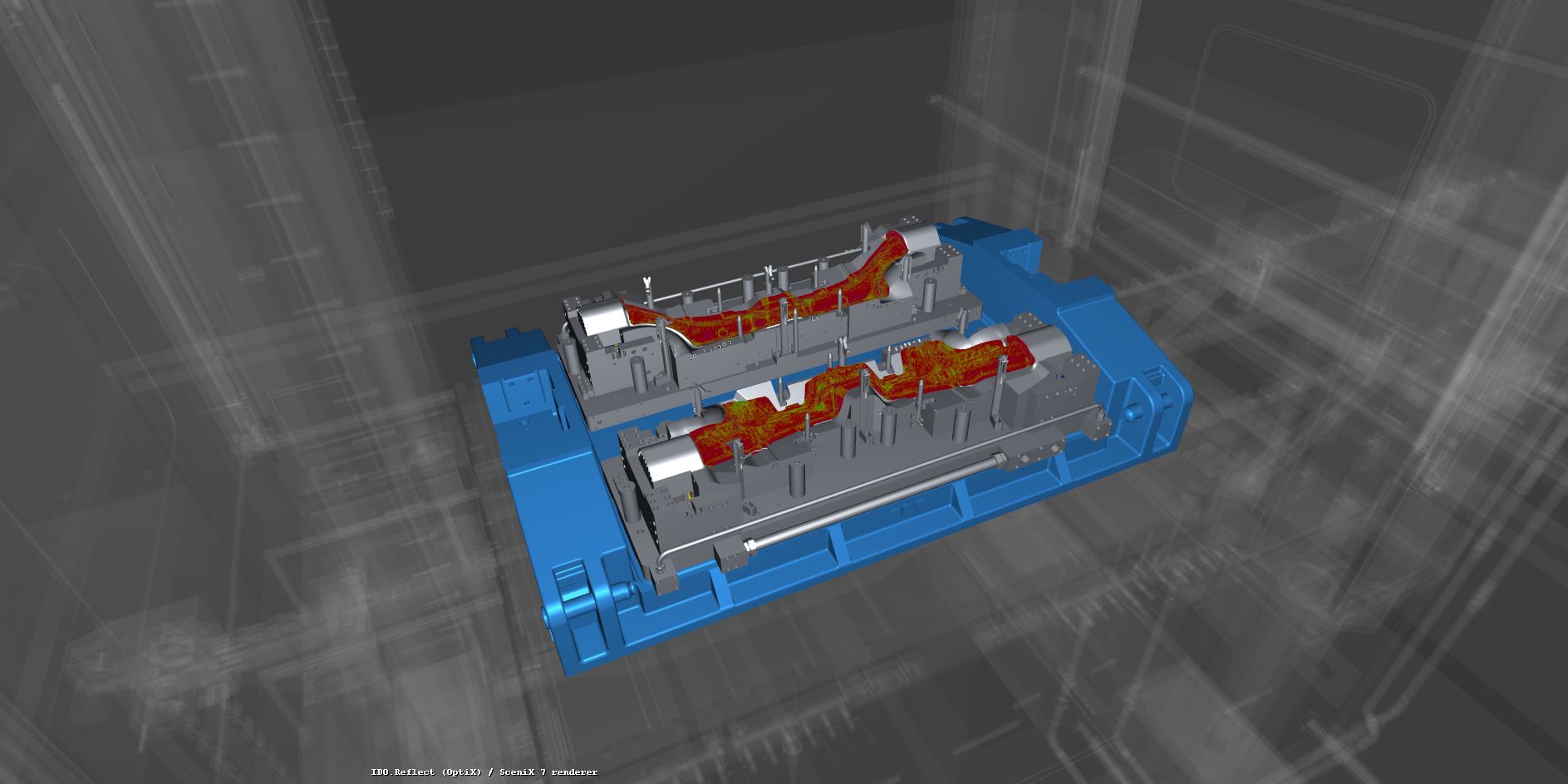
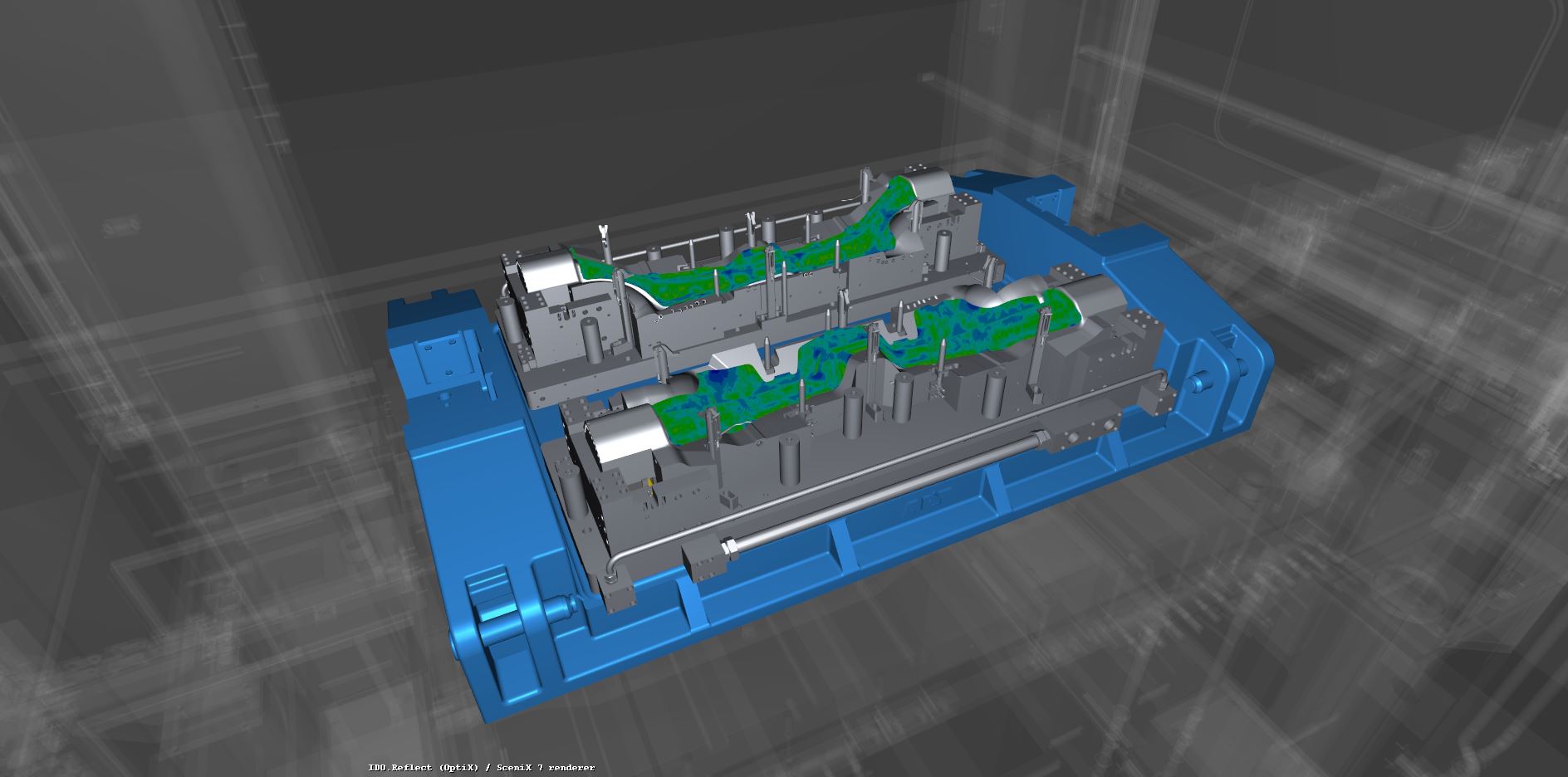
PAM-STAMP Features
- Topology check, cleanup and repair
- Material cost estimation
- Die face design next generation based on B-Spline geometry
- Fast link with simulation
- Accurate numerical methods
- Geometrical drawbeads
- Springback - Kinematic Hardening Model
- Ironing
- Triple speed mode for breathtaking short simulation times
- Precise prediction of wrinkles including folding – no numerical flattening
- Blank & Trim Line Optimization
- Springback of High Strength Steel
- (Multi-operation) compensation
- Virtual prototyping of the full stamping chain
- Cosmetic defects
- Customization
- High quality results without tradeoffs in cost and time
- Hot Forming , End-to-End Virtual Prototyping
- Chaining with manufacturing engineering and assembly prototyping
- Virtual Reality